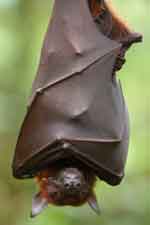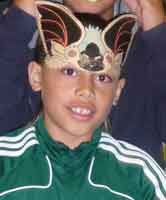[vc_row css=”.vc_custom_1456424341049{background-color: #0099ff !important;}”][vc_column width=”1/6″][vc_single_image image=”4992″ onclick=”custom_link” link=”https://kidsgrowingstrong.org”][/vc_column][vc_column width=”1/6″][vc_single_image image=”4994″ onclick=”custom_link” link=”https://kidsgrowingstrong.org/we-love-plants/”][/vc_column][vc_column width=”1/6″][vc_single_image image=”4998″ onclick=”custom_link” link=”https://kidsgrowingstrong.org/Energy”][/vc_column][vc_column width=”1/6″][vc_single_image image=”4996″ onclick=”custom_link” link=”https://kidsgrowingstrong.org/GoodGuys”][/vc_column][vc_column width=”1/6″][vc_single_image image=”5001″ onclick=”custom_link” link=”https://kidsgrowingstrong.org/garden-works/”][/vc_column][vc_column width=”1/6″][vc_single_image image=”5002″ onclick=”custom_link” link=”https://kidsgrowingstrong.org/healthy-eating”][/vc_column][/vc_row][vc_row css=”.vc_custom_1456424354142{background-color: #0099ff !important;}”][vc_column][vcex_spacing size=”10px”][vc_single_image image=”5027″][vcex_spacing size=”50px”][vc_row_inner][vc_column_inner width=”1/3″][vc_single_image image=”5291″ alignment=”center” css=”.vc_custom_1456432558688{padding-left: 100px !important;}”][/vc_column_inner][vc_column_inner width=”1/3″][vc_column_text]
Pest Control… Pollination…Seed Dispersal at YOUR Service
[/vc_column_text][/vc_column_inner][vc_column_inner width=”1/3″][vc_single_image image=”5292″][/vc_column_inner][/vc_row_inner][vcex_spacing][/vc_column][/vc_row][vc_row][vc_column width=”1/4″ css=”.vc_custom_1459228111921{margin-left: 25px !important;}”][vcex_spacing][vcex_spacing][vc_column_text]
Bats Work the Night Shift!
 Almost a third of the world’s bats feed on the fruit or nectar of plants. These nocturnal flying mammals are attracted to flowers that are white or pale in color, large in size and have a strong fruit-like fragrance.
Almost a third of the world’s bats feed on the fruit or nectar of plants. These nocturnal flying mammals are attracted to flowers that are white or pale in color, large in size and have a strong fruit-like fragrance.
Bats drink the sweet nectar inside flowers, picking up a dusting of pollen and move it along to other flowers as they feed. Most flowering plants cannot produce seeds and fruit without pollination.
In North American deserts, giant cacti and agave depend on bats for pollination.
[/vc_column_text][vcex_spacing][vc_single_image image=”5962″][/vc_column][vc_column width=”1/2″ css=”.vc_custom_1459228591063{margin-left: 30px !important;}”][vcex_spacing size=”90px”][vc_column_text]
BATS ARE GOOD GUYS
[/vc_column_text][vcex_spacing][vc_column_text]
Bats are essential to the health of our natural world. Unfortunately, bat populations are declining worldwide. The best way to help bats is to spread the word that BATS are THE GOOD GUYS!
Centuries of myths and misinformation still generate needless fears and threaten bats and their habitats. Losing bats would have devastating consequences for natural ecosystems. Bats make up about 20 percent of all mammal species. There are more than 1,200 species of bats that range from the tiny bumblebee bat (the size of a large bumblebee) to giant flying foxes with six-foot wingspans. Among all bat species, only 3 (all in Latin America) are vampires (eating only the blood of animals), and none of them are dangerous to humans. In fact, scientists have found the enzyme in their saliva to be one of the most potent blood-cot dissolvers known and is used to treat HUMAN stroke victims!
There are 47 bat species in the U.S. and 24 of them reside in California! Bats are the primary predators of night-flying insects, including many of the most damaging agricultural pests and others that BUG most of us humans. Almost one third of the world’s bats feed on the fruit or nectar of plants. These bats are vital pollinators of countless plants and essential seed dispersers with a major role in regenerating rainforests. About one percent of bats eat fish, mice, frogs or other small invertebrates. Two reasons why bats are nocturnal is that they have less competition for food at night since most other species of animals are active only during the day (specifically birds), and they have fewer predators (mostly owls).  Even bat droppings (called guano) are valuable to the environment as a rich natural fertilizer. Some biologists consider bats a “keystone” component of ecosystems. Without their pollination and seed-dispersing services, local ecosystems could gradually collapse, having a damaging effect on the on wildlife species at the base of the food chain. The largest known bat population in the world consists of 20 million Mexican free-tailed bats at Bracken Cave, just outside San Antonio, Texas. This isn’t just the biggest population but also the largest concentration of mammals in the WORLD! These bats eat approximately 200 tons of insects nightly! Sadly, more than half of American bat species are in decline or already listed as endangered. Knowledge is the key, spread the word and re-educate others – BATS are THE GOOD GUYS!
Even bat droppings (called guano) are valuable to the environment as a rich natural fertilizer. Some biologists consider bats a “keystone” component of ecosystems. Without their pollination and seed-dispersing services, local ecosystems could gradually collapse, having a damaging effect on the on wildlife species at the base of the food chain. The largest known bat population in the world consists of 20 million Mexican free-tailed bats at Bracken Cave, just outside San Antonio, Texas. This isn’t just the biggest population but also the largest concentration of mammals in the WORLD! These bats eat approximately 200 tons of insects nightly! Sadly, more than half of American bat species are in decline or already listed as endangered. Knowledge is the key, spread the word and re-educate others – BATS are THE GOOD GUYS!
[/vc_column_text][vcex_spacing][vc_single_image image=”5297″ alignment=”center”][vcex_spacing][/vc_column][vc_column width=”1/4″][vcex_spacing][/vc_column][/vc_row][vc_row][vc_column width=”1/6″][vcex_spacing][/vc_column][vc_column width=”1/6″][vcex_spacing][vcex_spacing][vc_column_text]
A bird’s wing is fixed, but a bat can scoop things up with its wing, cradle a new baby in the bottom of its wing or wrap a wing around itself like a blanket.
Some bats bring their insect pray back to a night roosting spot, where they eat them while hanging!
[/vc_column_text][vcex_spacing][vcex_spacing][vc_single_image image=”5298″ alignment=”center” onclick=”custom_link” link=”https://kidsgrowingstrong.org/wp-content/uploads/2016/02/Bat-mask.pdf”][vcex_spacing][vc_column_text css=”.vc_custom_1456454005840{padding-top: 30px !important;}”]
Click Here to download a BAT MASK
[/vc_column_text][/vc_column][vc_column width=”1/2″][vcex_spacing][vc_column_text]
QUICK BAT FACTS
[/vc_column_text][vcex_spacing][vc_column_text]
- Bats are loyal to their birthplaces and hibernation sites. How they find their way between summer and hibernating caves is a still a mystery.
- For their size, bats are one of the slowest reproducing mammals with an average of just one young born each year.
- A number of species of bats live 15-20 years. One bat was recorded to have survived in the wild for 41 years!
- Bats are born weighing about one third the weight of their mother, and are furless.
- They grow to full size and can fly within 3 weeks and become independent at about 6-10 weeks.
- Their wingspan ranges from 5 inches to about 5 feet, depending on the species.
- Bats can fly 40 mph and up to 80 mph, when diving in flight.
- Bats are not blind and many have excellent vision. Most use echolocation, a unique sonar system to detect obstacles, avoid collisions, and hunt at night.
[/vc_column_text][vcex_spacing][vcex_spacing][vc_separator border_width=”4″][vcex_spacing][vc_column_text]
BAT RESOURCES
[/vc_column_text][vcex_spacing][vc_column_text]
- Bat Conservation International – http://www.batcon.org/index.php/all-about-bats/intro-to-bats.html
- BatsLive – http://batslive.pwnet.org/index.php
- National Wildlife Federation – http://www.nwf.org/Wildlife/Wildlife-Library/Mammals/Bats.aspx http://blog.nwf.org/2012/07/bat-facts-you-wont-find-in-the-dark-knight-rises/
- USDA Forest Service – http://www.fs.fed.us/biology/wildlife/bats.html
- Organization for Bat Conservation – Build your own bat house http://www.batconservation.org/bat-houses/build-your-own-bat-house
- Organization for Bat Conservation – Where to place a bat house – http://www.batconservation.org/bat-houses/where-to-place
 [/vc_column_text][/vc_column][vc_column width=”1/6″][vcex_spacing][/vc_column][/vc_row]
[/vc_column_text][/vc_column][vc_column width=”1/6″][vcex_spacing][/vc_column][/vc_row]


